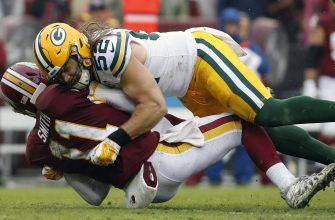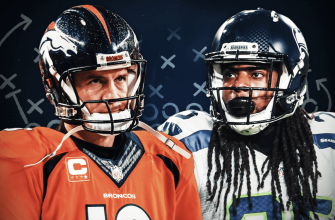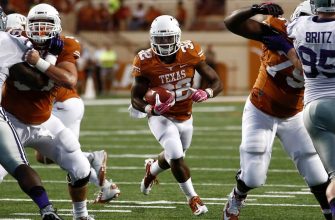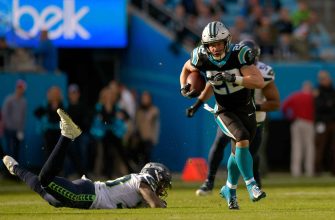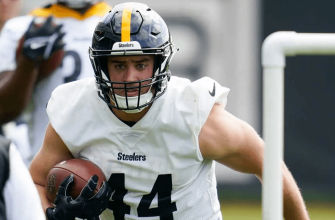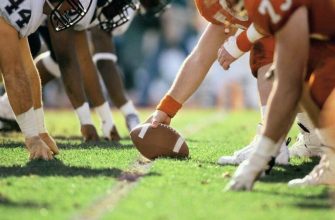Pass protection refers to the blocking strategies and techniques used by the offensive line, running backs, tight ends, and sometimes wide receivers to prevent the defensive players from tackling the quarterback. Effective pass protection gives the quarterback time and space in the pocket to find an open receiver and complete a pass play.
Pass protection is crucial to building a successful passing offense in the NFL. If the defense applies consistent pressure and collapses the pocket around the quarterback, it becomes very difficult to have an efficient aerial attack. The quarterback needs adequate time to go through their progressions and allow receivers to finish their routes. Elite quarterbacks like Tom Brady and Aaron Rodgers thrive when given a clean pocket.
During passing plays, offensive linemen cannot drive defenders down the field since it would be considered offensive holding. Instead they must establish a firm position and engage in hand fighting techniques to redirect pass rushers. Running backs and tight ends will often assist in pass protection, identifying blitzing linebackers or defensive backs and picking them up. Overall, the offensive blocking assignments are designed to form a protective pocket around the quarterback and give them functional space to operate.
Offensive Line Pass Blocking
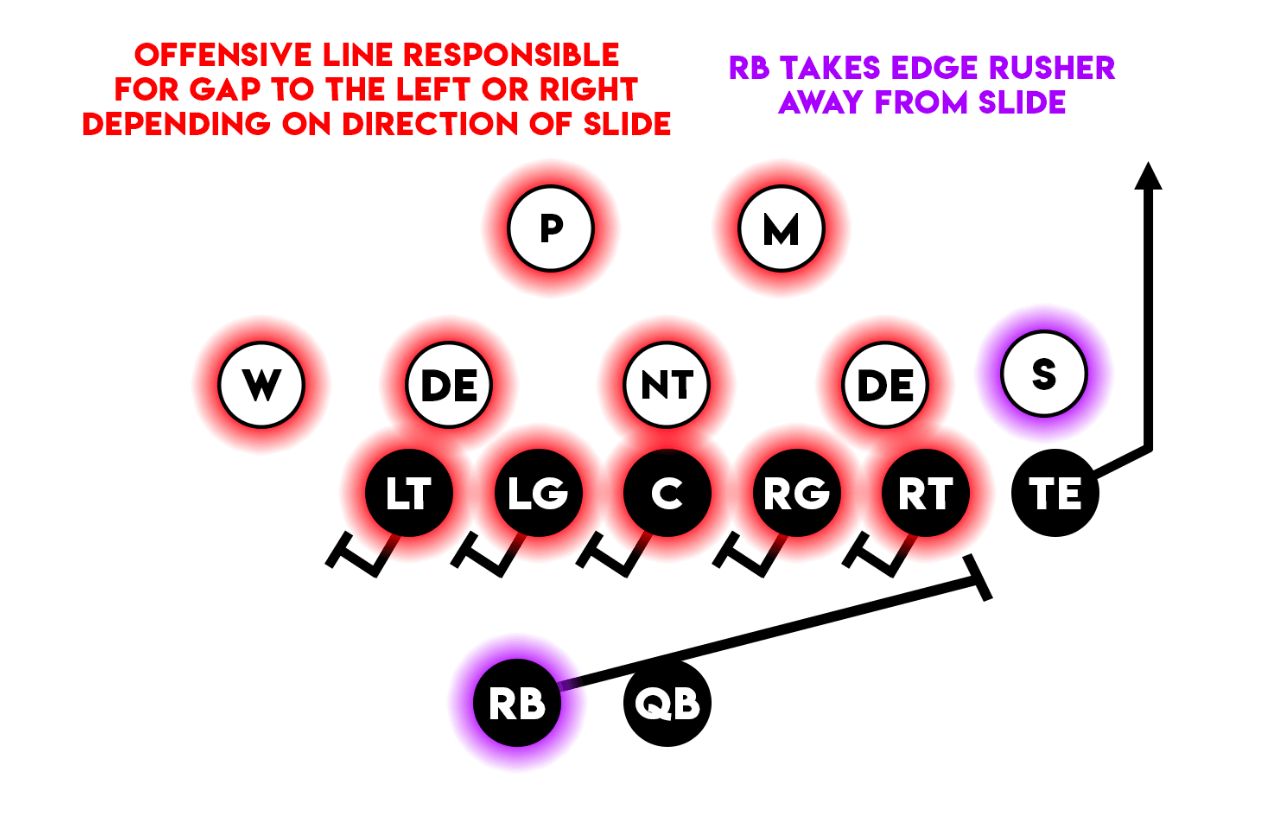
The offensive line is the first line of defense in pass protection. The tackles, guards and center each have specific roles and must work together cohesively.
The two offensive tackles line up on the outside, protecting the edges from speed rushers. Tackles must have quick feet and long arms to engage pass rushers. Inside at guard, players tend to be stronger to handle bull rushes up the middle. The center anchors the offensive line and makes protection calls.
There are several common pass blocking techniques used by the offensive line:
- Slide Protection: The offensive line slides as a unit to one side of the field. This helps block an overload blitz to one side. The center blocks back and the other side blocks the gap.
- Man Pass Protection: Each offensive lineman is responsible for an individual pass rusher based on assignments. Often used with maximum protect schemes.
- Zone Blocking: Offensive linemen block an area instead of a designated rusher. Works for blitz pickup.
- Gap Protection: Offensive linemen fill their assigned gaps, helping limit inside pressure. Forces edge rushers wider.
Good communication is essential for the offensive line to pass off assignments and pick up blitzes. Leverage, hand placement and footwork are key for maintaining blocks during the play. Overall, unity and chemistry for the offensive line leads to better pass protection.
Running Back and Tight End Blocking
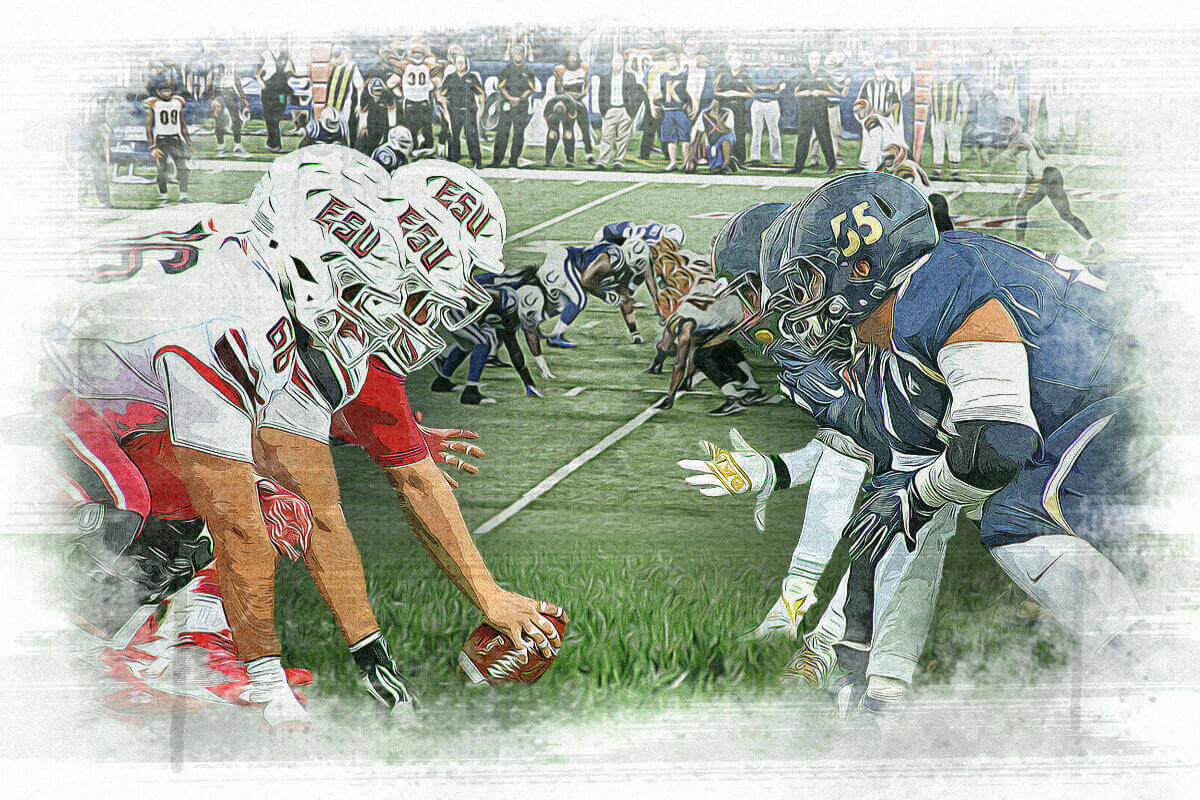
Pass protection in football relies on more than just the offensive linemen. Running backs and tight ends also play a key role in identifying and picking up blitzes to give the quarterback more time and help prevent sacks.
One of the main responsibilities for a running back in pass protection is to assist the offensive line in spotting potential blitzers. Running backs have a closer vantage point to see how the defense is aligned pre-snap. They can then communicate to the offensive line which defenders appear ready to blitz based on their stance or positioning. This allows the offensive line to adjust their blocking assignments accordingly.
Once the ball is snapped, the running back is an extra set of eyes scanning the defense to identify any blitzers coming through the gaps that the offensive line may have missed. The running back is responsible for picking up these free blitzers, buying the quarterback precious extra seconds to get the pass off. Good pass protecting running backs demonstrate quickness, agility and tackling form to stonewall blitzing linebackers or defensive backs.
Tight ends also play a role in pass protection, usually chipping the defensive end before releasing into their route. On the snap, the tight end will take a step and deliver a quick blow to the defensive end to disrupt their initial pass rush lane. This chip block delays and redirects the defensive end just long enough to allow the offensive tackle to take over the block, giving the quarterback a cleaner pocket to step up into. Tight ends also have to keep their head on a swivel, prepared to block any blitzers on their side if needed.
Working in tandem, the running back and tight end provide an extra layer of protection against the pass rush. Their pre-snap awareness and ability to detect and pick up additional blitzers make the quarterback’s job much easier. Proper execution by the running backs and tight ends is key for an effective passing game.
Defeating the Pass Rush
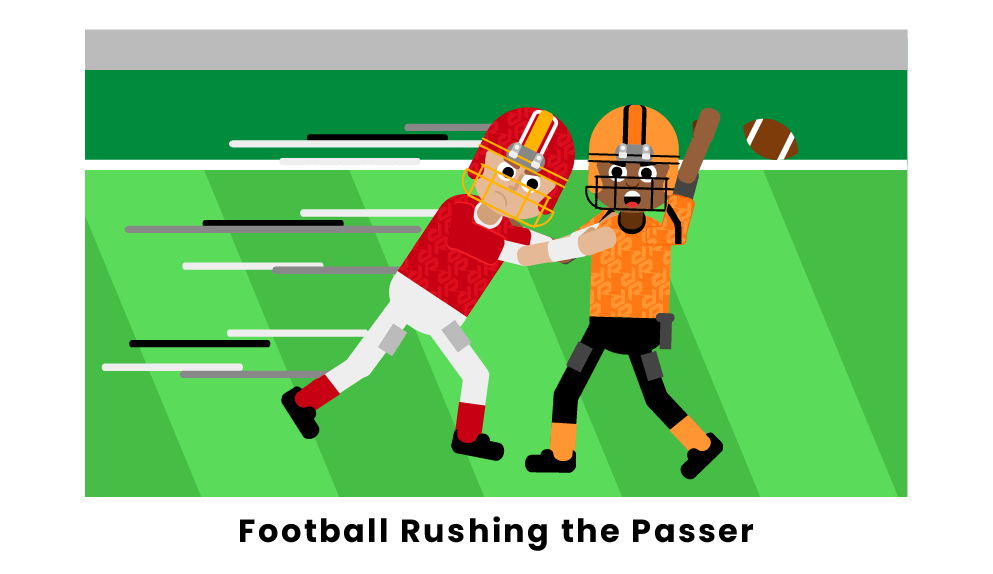
The offensive line’s main job on passing plays is to form a clean pocket for the quarterback to throw from. This requires defeating the opposing defensive linemen and linebackers who are relentlessly charging towards the QB.
There are several key techniques used by blockers to slow down and contain the pass rush:
- Cut blocking – This technique involves offensive linemen and running backs cutting or diving at the legs of oncoming rushers to take them down. It is extremely effective at slowing rushers down but also somewhat dangerous and increasingly penalized.
- Chop blocking – Chop blocks involve offensive players blocking defenders low, below the waist. This is now illegal if a second blocker hits the defender low when they are already engaged up high with another blocker.
- Double teams – A common tactic is for two offensive linemen to momentarily double team one defender at the line of scrimmage before one peels off to pick up another rusher. Working together they can control the point of attack and neutralize an opponent’s power or speed.
- Chip blocking – Running backs and tight ends will often be used to “chip” block by making initial contact with rushing linemen before going out on pass patterns. Even a quick hit can be enough to redirect their momentum.
- Play action – The threat of the run can slow eager pass rushers who must honor the possibility of a handoff. Play action draws defenders in and helps tackles engage them more easily.
Mastering both individual blocking techniques and coordinated schemes is essential to keep the quarterback upright and deliver the ball effectively to his targets downfield. Defenses continue to develop ever more complex blitzes to overwhelm pass protection, making this a key chess match in today’s pass-happy NFL.
Picking Up Blitzes and Stunts
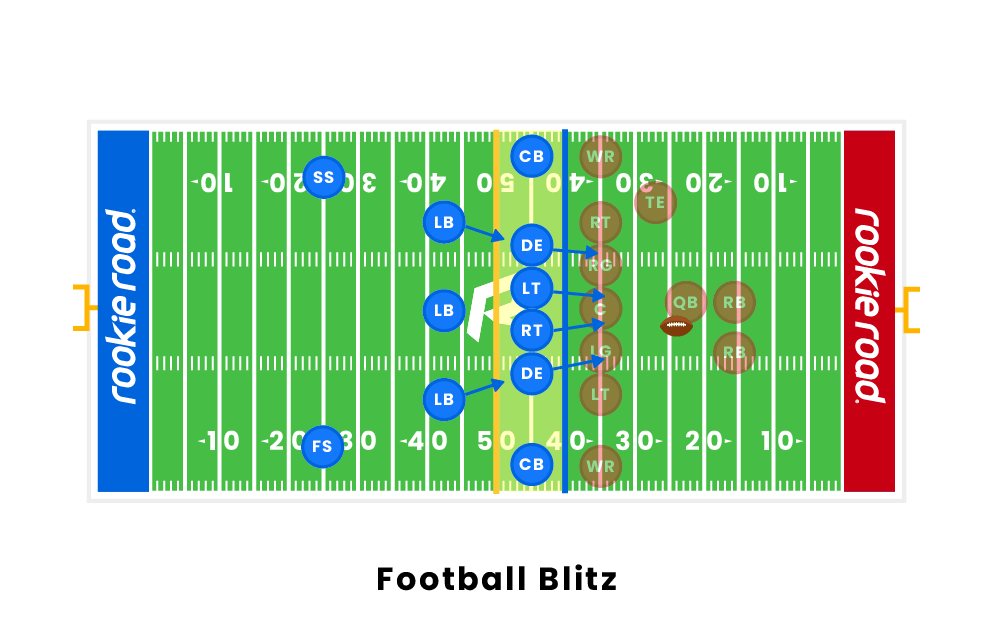
Defenses will frequently disguise and alter blitz schemes to try to confuse blockers and get free rushers to the quarterback. Linebackers and defensive backs may bluff blitzing before the snap, then back out into coverage once the ball is hiked. Other times they will show a standard look before the snap, then overload one side with extra blitzers post-snap.
Offensive lines must be able to adjust on the fly and communicate clearly on who is responsible for each pass rusher. If a blitzing linebacker comes through a gap that was not accounted for in the original protection, the closest blocker must slide over and pick them up while the adjacent lineman slides to cover their original assignment. Quarterbacks can help by diagnosing blitzes and making adjustments in pass protection pre-snap based on their reads of the defense.
Defensive lines also utilize stunts and twists to cross up pass protection schemes. Here two linemen will twist and cross post-snap to attack gaps from different angles. This is designed to force running backs and offensive linemen to quickly pass along rushers stunting into their area. Offense must recognize these stunts and pick them up smoothly through clear communication and passing along assignments.
Mastering blitz and stunt pickup requires extensive film study, repetitions, and coordination between all blockers and the quarterback. Precision timing and chemistry is needed so the offense can adjust on the fly and give the quarterback a clean pocket against disguised and overloaded pressures.
Pass Protection Schemes
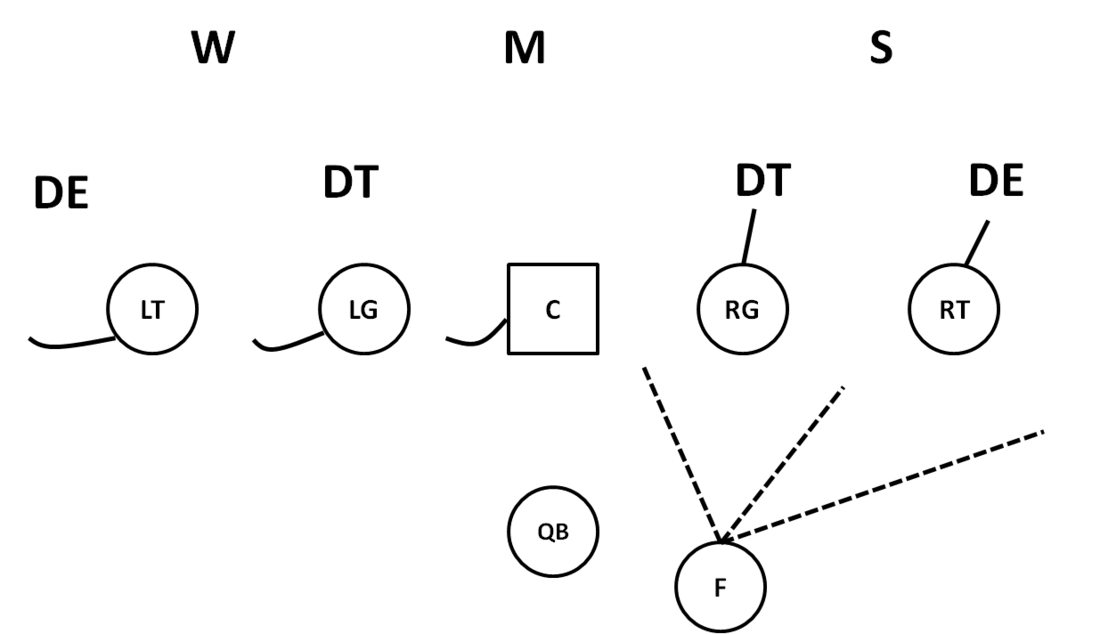
NFL teams utilize different pass protection schemes depending on the play call and offensive philosophy. The two main types of pass protection are zone blocking and man-to-man blocking.
In a zone blocking scheme, the offensive line works in tandem to block an area rather than a specific defensive player. The linemen are tasked with blocking whoever comes into their zone. This allows for coordinated pass protection that can pick up blitzes and stunts more effectively. The downside is zone blocking requires extensive repetition and communication to work properly.
Man-to-man blocking assigns each offensive lineman a specific defensive player to block on a passing play. This leads to straightforward pass protection with clear responsibilities. However, man blocking is vulnerable to blitzes and defensive coordinator pressure packages. If a lineman’s assigned defender doesn’t rush the passer, he may fail to assist teammates in need.
The play calling is vital in setting up the pass protection scheme. Coaches will call different plays designed to foil the defense’s pass rush. For example, plays with two tight ends or a running back kept in to block can provide additional protection against elite edge rushers. Screen passes get the ball out quickly while draws and rollouts move the launch point to confuse pass rushers. Run plays that establish dominance upfront also slow down an aggressive pass rush.
The quarterback’s pre-snap read is crucial as well. Adjustments may be made just before the snap depending on the defense’s alignment. The QB can also use hot routes and sight adjustments to defeat the blitz. Mastering pass protection requires coordination between coaches, offensive linemen, backs, tight ends, wide receivers, and the quarterback.
Quarterback Role
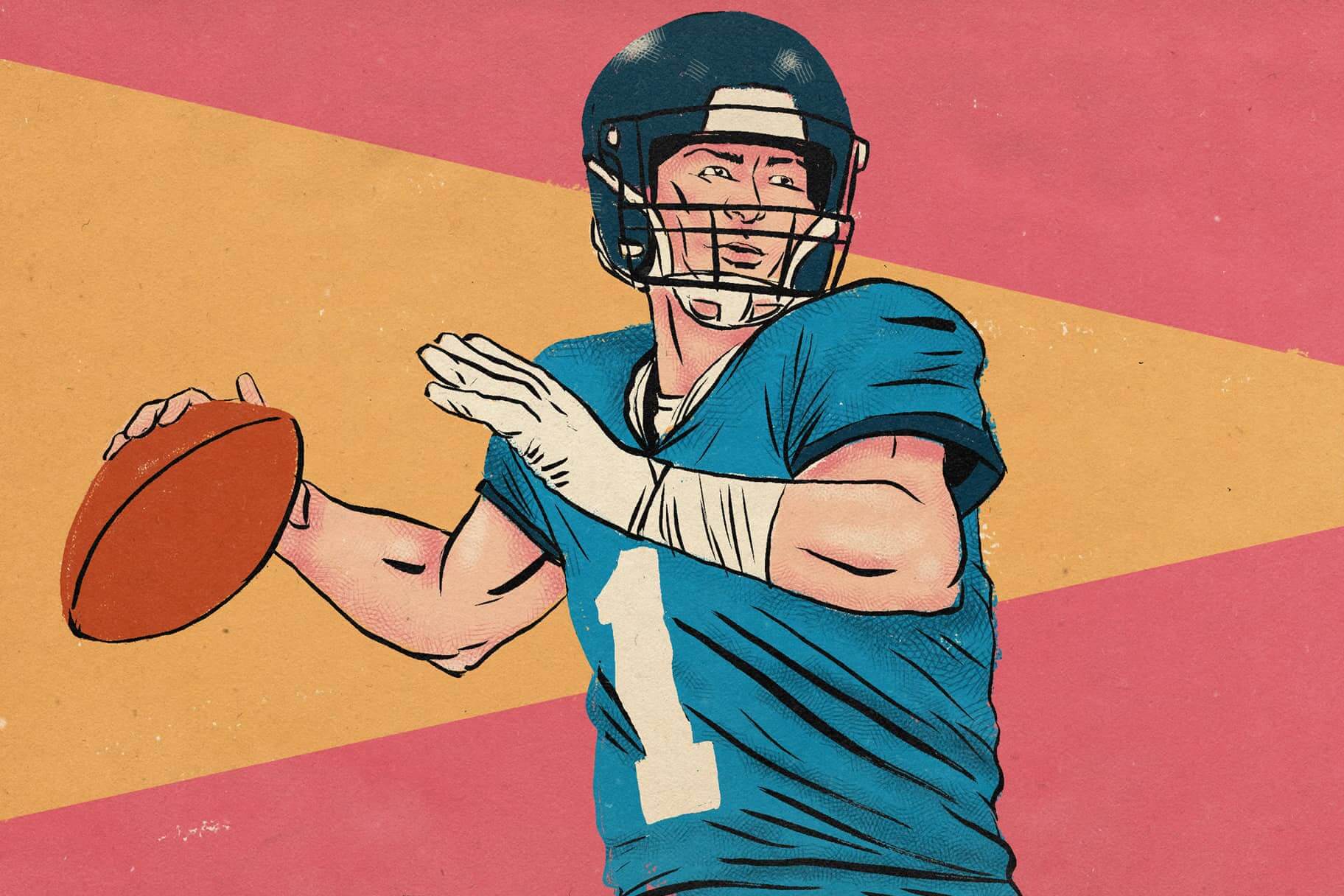
The quarterback has an important role in pass protection beyond simply throwing the ball. Before the snap, the quarterback will often make “protection calls” to adjust blocking assignments based on the defensive alignment. The QB identifies potential blitzers and communicates to the offensive line which defenders they are responsible for blocking.
Once the play begins, the quarterback must quickly read the defense to recognize when and from where the pass rush is coming. Skilled quarterbacks have awareness in the pocket to feel pressure and move subtly within the pocket to buy extra time. If the protection breaks down, the quarterback may need to scramble out of the pocket away from pressure or throw the ball away. QBs must keep their eyes downfield as long as possible while feeling the rush to give receivers time to get open. Elite quarterbacks stay calm under pressure and deliver accurate throws even when the pocket is collapsing.
Quarterbacks can also adjust routes for receivers based on the coverage. If a blitz leaves a particular area of the field open, the quarterback may signal to receivers to run routes that take advantage of the vulnerable space. The QB and receivers must be in sync on possible “hot routes” that can be broken off depending on the defense. This communication and coordination before the snap allows the passing game to exploit weaknesses in the pass coverage.
Evaluating Pass Protection
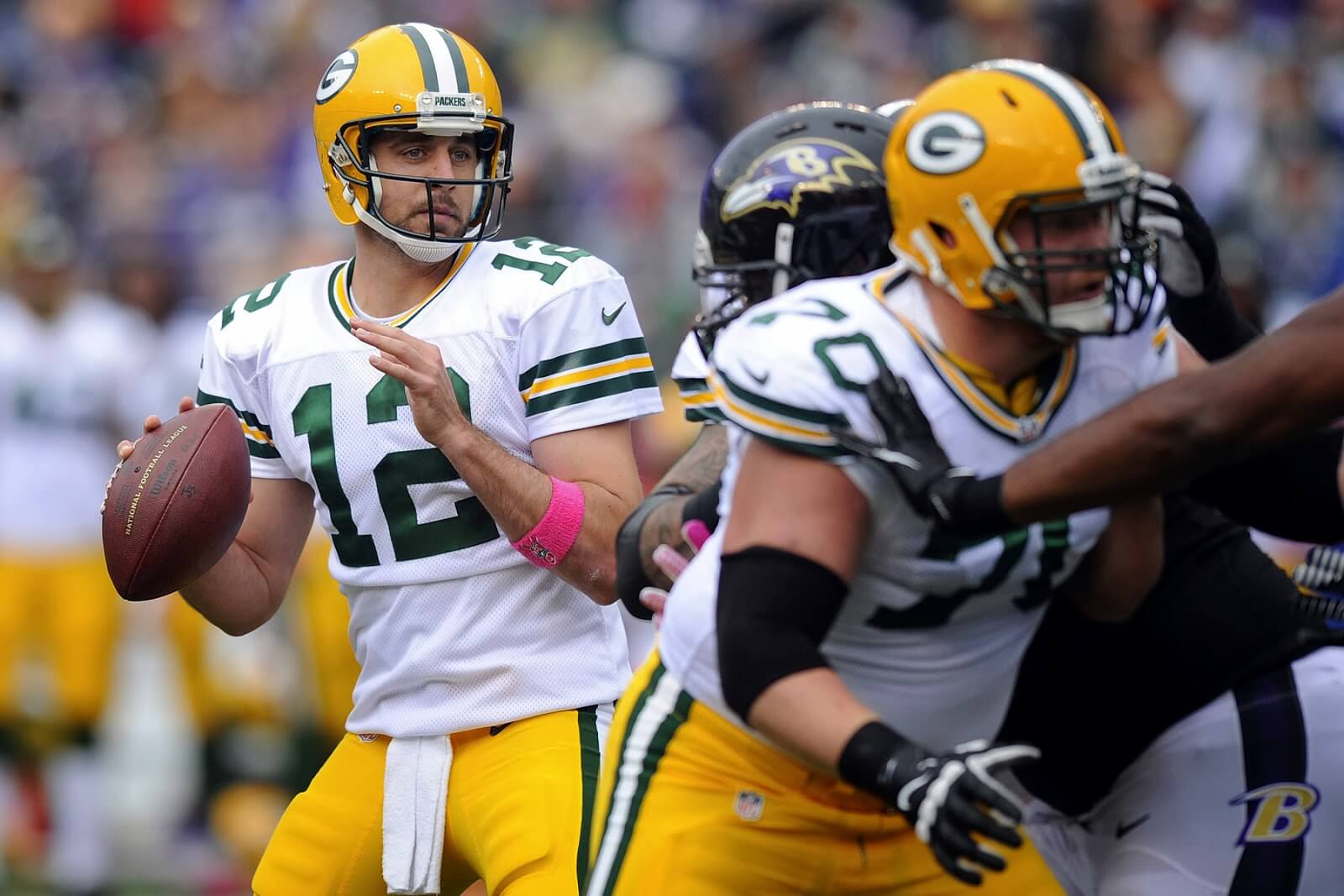
Pass protection is critical to an offense’s success, but it can be challenging to evaluate accurately. Two key methods coaches and analysts use are tracking sack rates and pressures allowed and film study of execution.
Sack Rate and Pressures Allowed
The most straightforward stat is the offensive line’s sack rate, which measures how many times the quarterback is sacked compared to pass attempts. However, sack rate alone doesn’t tell the whole story. A line that allows many pressures but relatively few sacks may appear strong statistically but is not executing well.
That’s why tracking total pressures (sacks + hits + hurries) allowed is a better measure. It captures the total number of times the quarterback is disrupted. Teams invest significantly in tracking and analyzing pressure rates through game film and advanced player tracking data. This information helps identify individual and team weaknesses.
Film Study Execution
Film analysis allows coaches to evaluate the quality of execution on each pass blocking play. This includes individual technique, communication and cohesion along the line, blitz pickups by backs and ends, and adherence to blocking assignments. Film often reveals flaws not captured by pressure and sack rates alone.
By scrutinizing footwork, hand placement, leverage, and coordination between linemen, coaches can pinpoint whether breakdowns are due to physical mistakes or mental errors and miscommunications. Strengths and weaknesses in specific protection schemes are identified. Focus areas for improvement can then be targeted in practice drills and training.
Together, pressure data and detailed film evaluation provide the feedback needed to analyze pass protection performance. This enables the offensive line and blockers to refine techniques, communication, and coordination to better protect the quarterback.
Drills and Training
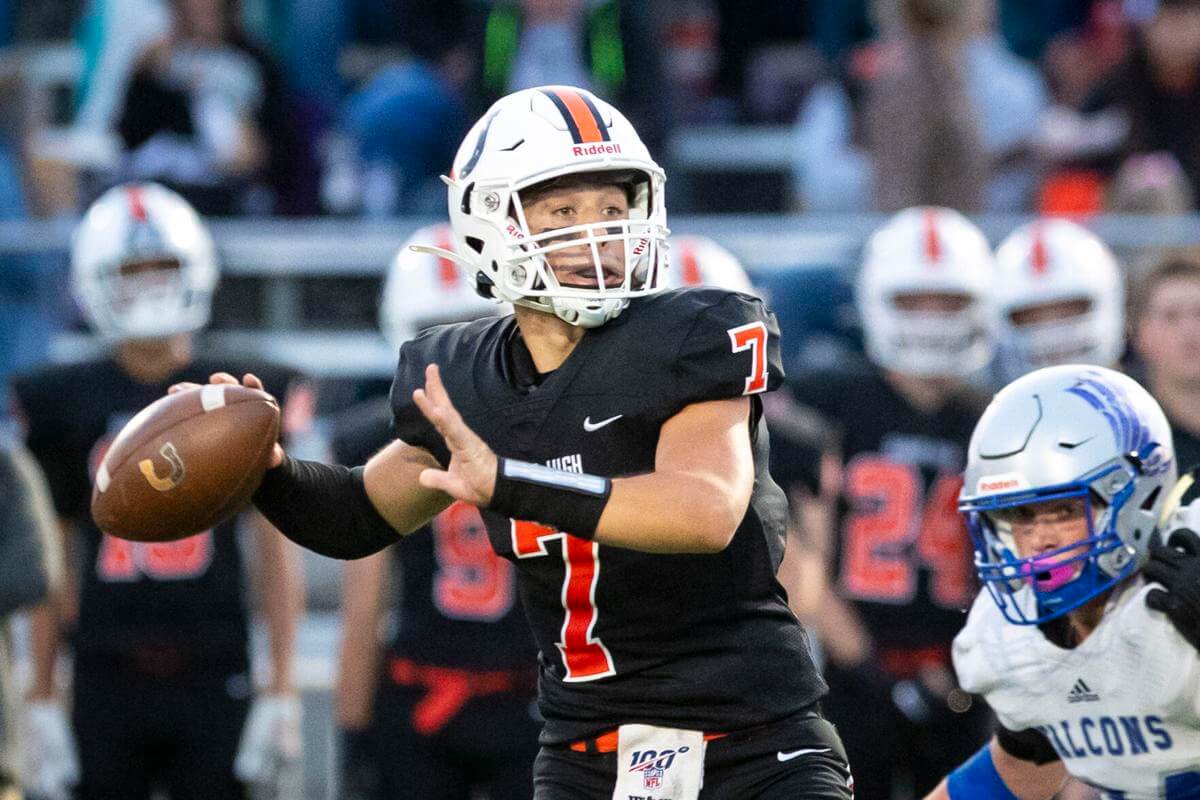
Effective pass protection requires extensive practice and repetition to build the necessary skills and instincts. Here are some key drills and training methods that teams use:
Linemen Drills
- Footwork drills – Offensive linemen practice sliding their feet laterally while maintaining a balanced athletic stance. Quick feet are essential to mirroring pass rush moves.
- Hand placement drills – Linemen work on quickly getting their hands inside on the defender’s chestplate. Proper hand placement gives them control.
- Mirror drills – One lineman mirrors the movements of another acting as a pass rusher. Maintaining proper technique while mirroring pass rush moves improves reaction time.
- Board drills – Linemen strike boards with their hands to develop fast, hard, and accurate punches. This helps defeat block attempts.
- Combo drills – Linemen string together various pass pro techniques like vertical sets, arm punches, and anchors against simulated pass rush moves. Developing fluid combos is key.
Blitz Recognition
- Pickup practice – The line calls out responsibilities and communicates as defenders show different blitz looks. The ability to adjust and pick up blitzers under pressure is critical.
- On-field walkthroughs – Players align against common blitz formations to practice blitz rules and sight adjustments. Mental reps build confidence in real game situations.
- Film study – Players study opponent blitz tendencies and review in-game blitz recognition. Understanding blitz concepts helps quick reactions.
- Simulated pressures – Coaches use dummy defenders or fire assistants into the backfield to simulate chaotic blitz looks. Working against the element of surprise hones instincts.
- Blindside pressure drills – QBs take reps with blockers only on one side, forcing them to react to pressure from the blindside. Keeps them alert and aids blitz recognition.
Conclusion
Pass protection involves coordinated execution between the offensive line, running backs, tight ends, and even wide receivers to give the quarterback time and space to throw the football. It requires discipline, technique, and communication to counter complex blitzes and pass rushes from the defense. When functioning at a high level, the pass blocking unit operates as a cohesive whole, with each player carrying out their assignment.
The offensive linemen are central to pass protection, as their blocks give the quarterback a clean pocket to step into. Their footwork, hand placement, and ability to anchor against bull rushes allow them to contain elite edge rushers. Running backs and tight ends also play a key role, chipping pass rushers before going out on routes. Their awareness and agility picking up blitzes from the second and third level help keep their quarterback upright.
Smooth pass protection does not happen by accident. It requires hours of practice repetitions and film study to prepare for opponents’ pressure packages. Offensive linemen must develop the muscle memory needed to react quickly off the snap, while backs and tight ends work on their communication and blocking fundamentals. When everyone works together to implement sound pass protection schemes, the results are huge passing lanes for the quarterback to deliver the football.
Overall, pass protection requires synchronized execution, discipline, and attention to detail from all positions involved in the passing game. A cohesive unit is essential for protecting the quarterback and generating explosive plays downfield.


